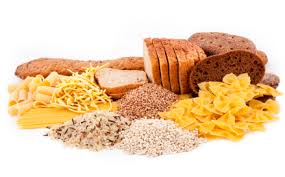


Located behind the stomach, the pancreas is a large gland responsible for secreting enzymes that facilitate digestion. Acute pancreatitis develops suddenly, but chronic pancreatitis develops over time. Long-term, excessive alcohol use is the main cause of chronic pancreatitis. While medical treatment is essential, you should also pay attention to your diet for pancreatitis.

What you eat can help improve or aggravate your pancreatitis symptoms, such as nausea, diarrhea, abdominal pain, unintentional weight loss, and vomiting. To avoid these symptoms, you should focus more on increasing your intake of protein and eat foods rich in antioxidants and animal fats. You can opt for beans, lean meats, clear soups, lentils, and dairy alternatives, such as almond milk and flax milk. These are safe food options because your pancreas does not need to work hard to process them.
Yogurt is a good option to include in your diet. Similarly, veggie soups can be a part of your diet for pancreatitis. And you may want to increase your intake of cherries, blueberries, spinach, and whole-grains because they provide you with antioxidants that eliminate free radicals from your system and lower inflammation. Red grapes contain resveratrol, which acts as an antioxidant and helps treat pancreatitis. Moreover, you should also include fluids, such as juices, water, and soups in your diet.

To avoid aggravating your symptoms, you should avoid or at least limit your intake of organ meats, red meat, mayonnaise, fried foods, pastries, margarine, butter, full-fat dairy, and beverages with added sugars.
What it actually means is that you should avoid trans fats as much as possible. Anything that is heavily processed, such as fast food hamburgers and French fries should be avoided at all cost. Eating anything that is deep-fried is likely to trigger a flare-up of pancreatitis. Moreover, it is important to limit your intake of foods made from the refined flour, such as pastries, cakes, and cookies.
Sticking to a good diet for pancreatitis is important to manage your condition better. Here is a sample menu you can consider.
Eat two scrambled eggs whites with spinach and a slice of whole wheat toast. You can have your toast with a tablespoon of fruit preserve. A cup of tea or coffee will also work.
An apple will serve as a perfect mid-morning snack. You can also enjoy a cup of herbal tea.
For lunch, you can eat a tortilla with rice and black beans. You can also have three ounces of chicken breast along with salsa and juice.
You can have a banana or go for whole-wheat crackers. Drink as much water as you can.
For dinner, you can opt for pasta with marinara sauce and shrimp. Small green salad with balsamic vinegar is also a healthy choice. Be sure to have some juice or water.
You can eat non-fat Greek yogurt with honey and blueberries. Do not forget to drink a cup of herbal tea.
When planning your diet for pancreatitis, be sure to read labels before buying anything at the grocery store. Opt for products that are fat-free and low-fat. You should talk to your doctor or dietitian to help plan a better diet, especially if you also have celiac disease, diabetes, lactose intolerance, or other health problems.
Here are some additional tips to help you manage your pancreatitis symptoms in a much better way.